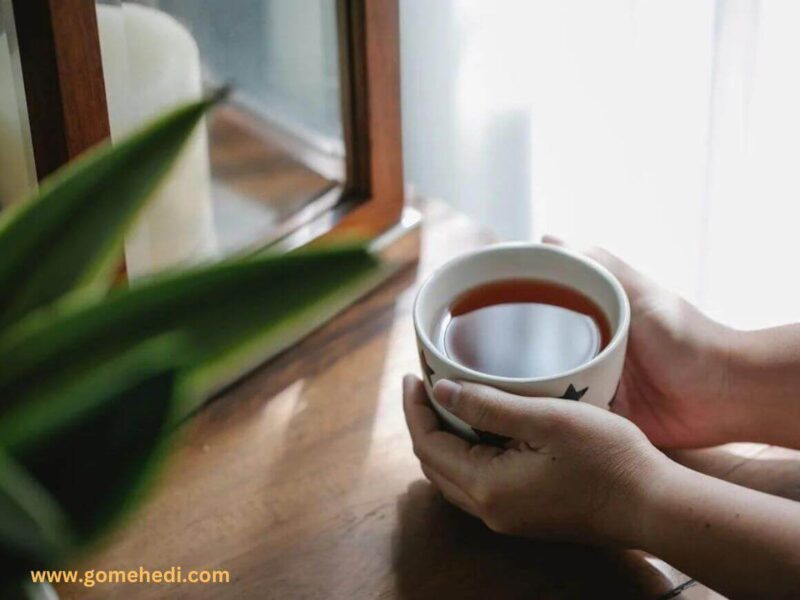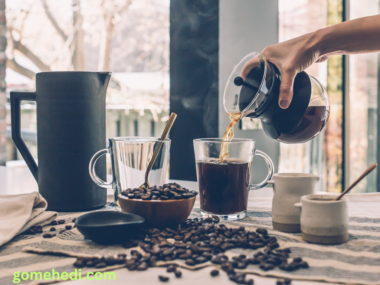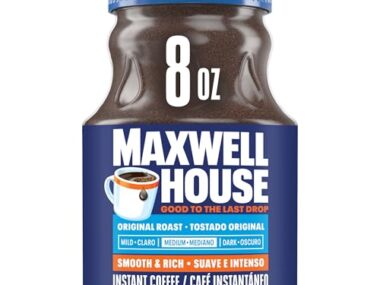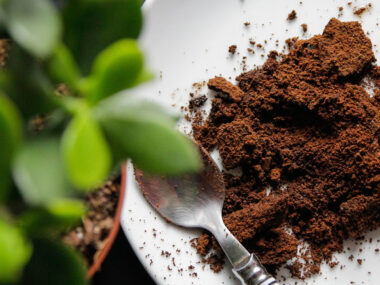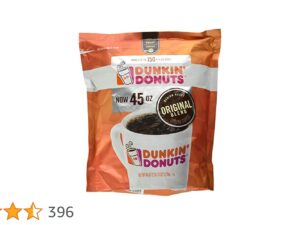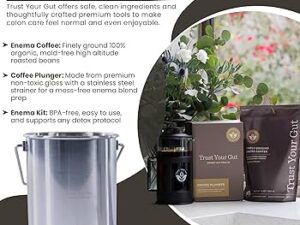Table of Contents Hide
“The most expensive coffee in the world is made from beans that have been eaten and excreted by a civet cat.”Here, I will discuss the essential how much coffee per cup.
Coffee lovers welcome back to yet another blog post of mine. Today, I am going to discuss how much coffee per cup is needed to make the perfect brew.
Making great coffee is like finding the perfect balance between the flavors of coffee beans and water. This balance is called the coffee-to-water ratio. It’s super important for making your coffee taste amazing.
In this blog, you will learn about the secret behind making the perfect cup of coffee. I’ll talk about how much coffee and water to use, so you can make delicious coffee every time. Ready to become a coffee brewing pro?
Understanding the Coffee-to-Water Ratio
Coffee-to-water ratio is like a recipe for making coffee. It’s all about how much ground coffee you use compared to the amount of water you add.
Imagine it like making a soup – if you put too much water, it’ll be weak, but if you put too little, it’ll be too strong. Getting the right balance is key to making great coffee.
Impact on Flavor, Strength, and Consistencyc
Now, let’s talk about how this ratio affects your coffee. If you use more coffee compared to water, your coffee will be stronger and have a more intense flavor. It’s like adding more seasoning to your food for a bolder taste.
On the other hand, if you use less coffee, your brew will be milder and lighter in flavor. It’s like watering down a drink to make it less strong.
This ratio also affects how consistent your coffee tastes. When you find the right balance, each cup you brew will have the same great taste every time.
But if you mess up the ratio, you might end up with coffee that’s too weak one day and too strong the next.
Variations and Effects
Changing the coffee-to-water ratio can really change how your coffee turns out. If you use more coffee than usual, you’ll get a stronger brew with more kick. But if you use less coffee, your drink will be milder and easier to sip.
It’s not just about the taste, though. Getting the ratio wrong can mess up the brewing process.
If you use too much coffee, it might not extract properly, leading to a bitter taste.
But if you use too little, you might end up with a sour flavor. So, it’s important to get the ratio just right to make sure your coffee tastes perfect every time.
Factors That Affect Coffee-to-Water Ratio
Types of coffee beans and brewing methods significantly impact the ideal coffee-to-water ratio. In this part of the blog you will learn how bean types like Arabica and Robusta, alongside brewing methods, affect your perfect brew.
Type of Coffee Beans
Different types of coffee beans can change how much coffee you need to make a tasty brew. Some beans are super strong, so you don’t need as much.
Others are more mellow, so you might need to use more to get a good flavor.
Arabica Beans: Imagine Arabica beans as the fancy ones. They’re grown in higher places where it’s cooler. These beans have a smoother taste, kind of like when you eat something that’s not too strong or bitter. They often have a pleasant smell and a bit of a tangy or fruity flavor.
Robusta Beans: Now, Robusta beans are a bit different. They’re grown in lower areas and warmer climates. These beans have a stronger taste and can be a bit bitter. They also have more caffeine, so they can give you a good energy boost. They’re often used in strong coffee drinks like espressos.
Brewing Method
How you make your coffee matters too. Whether you’re using a drip coffee maker, a French press, or an espresso machine, each method needs a different ratio.
Drip Coffee Maker: Imagine a machine where you pour water in, and it does the rest. It heats the water and drips it over the coffee grounds in a filter. It’s like making a big pot of coffee all at once, great for busy mornings or serving a group of people.
French Press: Think of a French press like a big cup with a plunger. You put coarsely ground coffee at the bottom and pour hot water in. Then, you let it sit for a bit and slowly press down the plunger to separate the grounds from the coffee. It gives you a strong and rich cup of coffee.
Espresso Machine: This is the machine you see at fancy coffee shops. It forces hot water through finely-ground coffee beans. This creates a strong and concentrated coffee called espresso. It’s the base for many other coffee drinks like lattes and cappuccinos.
Pour Over: Imagine pouring hot water over coffee grounds in a funnel-shaped filter. You control how fast the water goes through and how much you pour, which affects the flavor. It’s like being a coffee scientist, experimenting with different techniques to make your perfect cup.
Aeropress: Picture a device that looks like a big syringe. You put coffee and water in, give it a stir, and then press down to push the coffee through a filter. It’s kind of like a mix between a French press and espresso, giving you a smooth and strong cup of coffee.
Cold Brew: This method is all about patience. You soak coarse coffee grounds in cold water for a long time, usually overnight. The result is a smooth and mellow coffee concentrate that you can dilute with water or milk. It’s perfect for hot summer days when you want a refreshing pick-me-up.
Personal Preference
Everybody has different tastes when it comes to coffee. Some like it strong, others prefer it milder.
That’s where how much coffee per cup comes in. You can adjust the ratio to make your coffee just the way you like it.
Once you find the perfect ratio, you’ll enjoy every cup of coffee just the way you like it.
Strength: Some folks like their coffee to be really strong and intense, while others prefer it to be more mellow and smooth.
How It’s Made: Different people have their favorite ways of making coffee. Some might love the rich flavor of coffee made in a French press, while others might prefer the simplicity of a drip coffee maker.
What’s Added: For some, coffee is perfect just the way it is, while others like to add things like milk, sugar, or flavored syrups to make it sweeter or creamier.
How Dark It Is: Coffee beans can be roasted to different levels, which affects the flavor. Some like their coffee lightly roasted for a brighter taste, while others prefer it dark and bold.
Where It’s From: Coffee beans come from all over the world, and each place has its own unique flavor. Some people might have a favorite country or region where they think the best coffee comes from.
How Hot or Cold: Everybody has their own preference for how hot they like their coffee. Some want it really hot, while others like it to cool down a bit so they can drink it right away without burning their mouths.
Trying New Things: Some folks like to stick to their favorite kind of coffee. Others enjoy trying out new blends, flavors, and types of beans to see what they like best.
How to Find the Perfect Ratio? Tips and Techniques
Finding the right mix of coffee and water is like finding the perfect recipe for your favorite dish. Here’s where you start:
General Guidelines
If you’re using a ratio of 1 teaspoon of coffee for every 8 ounces (oz) of water, you’ll need 240 milliliters (ml) of water or 1 cup of water, and 3 teaspoons of coffee.
Basic starting point for coffee-to-water ratios
You can choose the ratio that suits your taste preferences. If you like stronger coffee, you might use a ratio with fewer ounces of water for each teaspoon of coffee.
If you prefer milder coffee, you might use a ratio with more ounces of water for each teaspoon of coffee.
Importance of Using a Kitchen Scale
Ratio | Water (ml) | Water (cups) | Coffee (teaspoons) |
1 tsp per 8 oz | 240 | 1 | 3 |
1 tsp per 6 oz | 180 | 3/4 | 3 |
1 tsp per 10 oz | 300 | 1 1/4 | 3 |
Just like baking needs precise measurements, so does brewing coffee. Using a kitchen scale ensures you get the right amount of coffee and water every time.
This makes sure your coffee tastes the same no matter how many times you make it.
Here are the benefits of using a kitchen scale:
- It makes sure you measure things correctly.
- Your coffee will taste the same every time you make it.
- You can easily try different ratios without any guesswork.
Experimentation
Think of brewing coffee like a fun game where you get to try new things and learn what you like best.
Don’t forget to keep track of your experiments so you can always make the perfect cup. And experiment your preference with how much coffee per cup you want.
Try New Things
Imagine brewing coffee as a fun adventure, like trying out different games or exploring new places.
Don’t worry about making mistakes – trying different ways of making coffee is part of the fun! You can experiment with how much coffee to use, how you brew it, and even what type of coffee you use until you find what tastes best to you.
Example: You could start by changing how much coffee you use compared to how much water. Then, you can switch up how you make your coffee – like trying a French press one day and a pour-over the next. Each time you make coffee differently, you learn something new about what you like.
Keep Track of What You Do
Just like how scientists write down what they discover in their notebooks, you can keep a special notebook for your coffee experiments.
Write down things like how much coffee and water you used, how long you brewed it for, and any other details you think are important.
This helps you remember what you did and figure out what makes your coffee taste the best.
Example: Maybe you notice that using a little more coffee makes your coffee taste stronger, or that brewing it for a bit longer brings out different flavors. Writing these things down helps you remember what works best for you so you can make delicious coffee every time.
Flavor Profiles
Altering Flavor Profiles: Changing how much coffee or water you use can change how your coffee tastes. Using more coffee can make it stronger, while using less can make it milder. It’s like adding more or less sugar to your tea to make it sweeter or more bitter.
Examples of Flavor Highlighting: Imagine your coffee is like a painting, and the ratio is the brush you use. A higher ratio might bring out the sharp, tangy flavors, while a lower ratio might make it taste smoother and richer.
Coffee Brewing Methods
Are you ready to discover some cool ways to brew your own delicious cup of coffee? Get ready to dive into the magical world of coffee brewing methods!
- Drip Coffee Maker:
- Step 1: Fill the water reservoir with water.
- Step 2: Put a coffee filter into the filter basket.
- Step 3: Add your favorite ground coffee into the filter.
- Step 4: Close the lid and press the start button.
- Step 5: Wait for the machine to do its magic!
- Step 6: Once it’s done, pour your freshly brewed coffee into your mug and enjoy!
- French Press:
- Step 1: Heat water until it’s hot but not boiling.
- Step 2: Add coarsely ground coffee into the French press.
- Step 3: Pour hot water over the coffee grounds.
- Step 4: Stir the coffee and water gently.
- Step 5: Put the lid on but don’t press down yet!
- Step 6: Wait for about 4 minutes.
- Step 7: Slowly press down the plunger.
- Step 8: Pour your yummy coffee into your cup and sip away!
- Pour-Over:
- Step 1: Place a pour-over cone on top of your mug.
- Step 2: Put a coffee filter inside the cone.
- Step 3: Wet the filter with hot water to rinse it.
- Step 4: Add ground coffee into the filter.
- Step 5: Slowly pour hot water over the coffee grounds in a circular motion.
- Step 6: Keep pouring until you’ve used all the water.
- Step 7: Let it drip through the filter into your mug.
- Step 8: Take a deep breath and enjoy the aroma before sipping your tasty coffee!
- Step 1: Boil some water.
- Step 2: Scoop some instant coffee into your mug.
- Step 3: Pour hot water over the coffee granules.
- Step 4: Stir until the coffee is dissolved.
- Step 5: Add milk or sugar if you like.
- Step 6: Ta-da! Your quick and easy coffee is ready to enjoy!
Troubleshooting Common Issues
Making great coffee isn’t just about throwing some coffee grounds into hot water and hoping for the best. It’s an art, and like any art, it requires a bit of know-how to get it just right.
No worries! With just a few tips, you can make sure your coffee tastes exactly how you like it—strong and flavorful, without bitterness, or smooth and mellow without being weak.
Over-Extraction vs. Under-Extraction
Over-Extraction
Imagine making tea by leaving the tea bag in hot water for too long. The tea ends up tasting really bitter and strong because too much flavor has been squeezed out of the tea bag.
Similarly, over-extraction in coffee happens when we brew it for too long or make the coffee grains too tiny. This makes the coffee taste bitter and not very pleasant.
Under-Extraction
Now, think about making tea but taking the tea bag out too quickly. The tea ends up tasting weak and watery because not enough flavor has been released from the tea bag.
Under-extraction in coffee is similar. When we brew it for too short a time or the coffee grains are too big, the coffee tastes sour and not strong enough.
Solutions for Adjustment
- Fixing Over-Extraction: If your coffee tastes too bitter, try brewing it for less time or using bigger coffee grains. Also, you can try using slightly cooler water. This helps to stop too much flavor coming out.
- Fixing Under-Extraction: If your coffee tastes weak and sour, try brewing it for a bit longer or using smaller coffee grains. Also, try using slightly hotter water. This helps to get more flavor out of the coffee.
Bitterness or Weakness
Effects of Improper Ratios
- Bitterness: Just like over-brewed tea, coffee can become bitter if we use too much coffee or brew it for too long. This happens because too many strong flavors are pulled out of the coffee grains.
- Weakness: On the other hand, if we use too little coffee or brew it for too short a time, the coffee can taste weak and bland. This happens because not enough flavor is released from the coffee grains.
Tips for Flavor Balance
- Use the Right Amount: Experiment with how much coffee and water you use until you find the taste you like best. Start with a ratio of 1 part coffee to 18 parts water.
- Grind Carefully: Make sure your coffee grains are all the same size. If they’re not, the flavor won’t come out evenly, and your coffee might taste weird.
- Brew Just Right: Pay attention to how long you brew your coffee. If it’s too short or too long, the taste might not be just right. Find the sweet spot that works for you.
- Good Water: Lastly, make sure you’re using good-quality water. Water with strange tastes or bits in it can make your coffee taste funny. So, use filtered water if you can.
Expert Insights and Recommendations
Experts and coffee lovers agree: that getting the right balance of coffee and water is key for tasty coffee.
They recommend from their experience how much coffee per cup would be perfect. Let’s explore their tips for brewing the perfect cup
Coffee Experts' Perspectives on Coffee-to-Water Ratios
“The ideal coffee-to-water ratio is crucial in achieving a balanced and flavorful brew. Too much coffee can result in an overpowering taste, while too little can leave the brew lacking in depth.
Finding the right balance is key.” – John Doe, Coffee Connoisseur and Roastmaster
“In my experience, a coffee-to-water ratio of around 1:16 or 1:17 tends to produce a rich and well-extracted cup.
However, personal preference plays a significant role, so don’t hesitate to experiment to find what suits your taste best.” – Jane Smith, Specialty Coffee Consultant
Recommendations from Baristas or Coffee Enthusiasts
“When it comes to brewing coffee, consistency is key. Measure your coffee and water precisely, and stick to a consistent ratio every time you brew. This ensures that you can replicate your favorite cup consistently.” – David, Experienced Barista(https://www.linkedin.com/in/david-kokoe-00539a1b8/?originalSubdomain=ke )
“Don’t forget about the grind size! Adjusting your grind can have a significant impact on extraction.
For methods like pour-over, a medium-fine grind works well, but for French press, a coarser grind is preferable. Experiment with different grind sizes to see how they affect the flavor.” – Emily, Coffee Enthusiast and Home Brewer.
Conclusion
The coffee-to-water ratio is like the magic formula for making delicious coffee. It decides how strong, flavorful, and consistent your brew will be. Getting it right is super important for a great cup.
Don’t be afraid to try different ratios! By experimenting, you can find the perfect balance that suits your taste buds. It’s like being a scientist in your kitchen, discovering the best way to make your coffee just right for you.
So, keep exploring and brewing! Whether you’re a coffee pro or just starting out, there’s always more to learn and enjoy. Let each cup be an opportunity to savor the wonderful world of coffee.
FAQs about Coffee Brewing
What is the ideal coffee-to-water ratio for brewing?
The ideal coffee-to-water ratio typically ranges from 1:15 to 1:18, depending on personal preference. This means using 1 part coffee to 15-18 parts water.
How does the coffee-to-water ratio affect the taste of coffee?
The coffee-to-water ratio determines the strength and flavor of your coffee. More coffee creates a stronger brew, while less coffee results in a milder flavor.
What factors influence the coffee-to-water ratio?
Factors like bean type, grind size, brewing method, and personal taste preferences influence the ideal coffee-to-water ratio.
What happens if the coffee-to-water ratio is incorrect?
Using too much coffee or too little water can lead to bitterness, while using too little coffee or too much water can result in a weak and flavorless brew.
How can I adjust the coffee-to-water ratio for better results?
To correct bitterness, decrease coffee or brewing time, and use slightly cooler water. To fix weakness, increase coffee or brewing time, and use slightly hotter water.
Mehedi Hasan
As a distinguished affiliate marketer specializing in the dynamic realm of kitchen appliances, Mehedi Hasan expertly navigates the culinary landscape. With a passion for quality and functionality, he curates valuable insights, guiding audiences towards informed choices. Embrace a world of culinary excellence with Mehedi Hasan, your trusted companion in the kitchen innovation journey.
